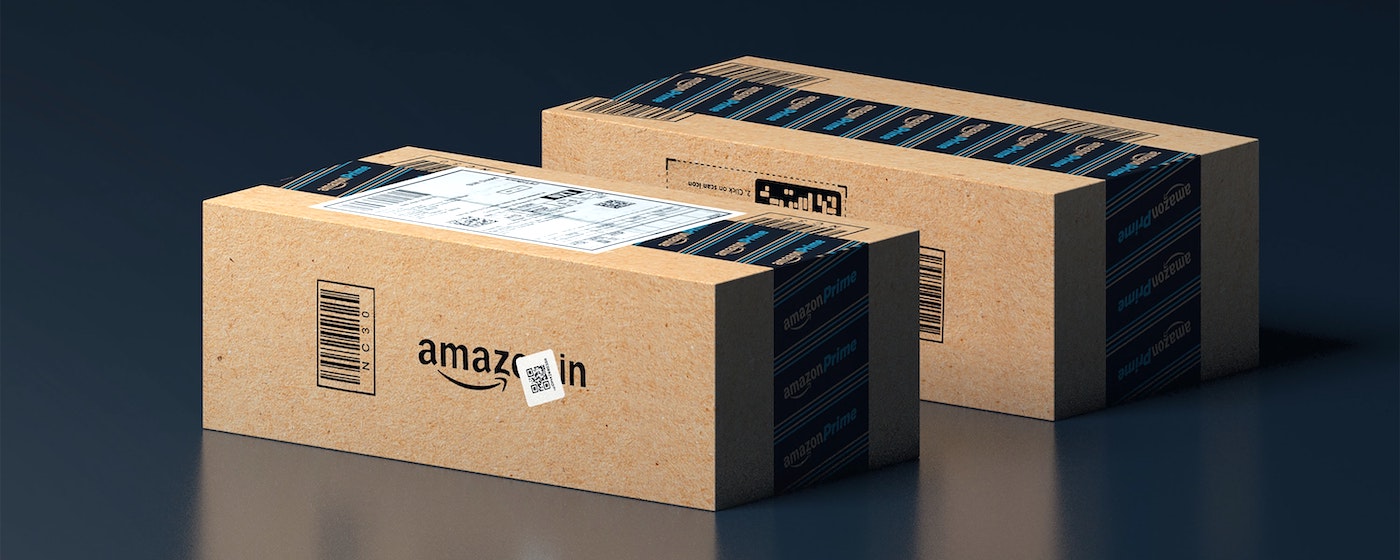Table of Contents
** Minutes
8 biggest cons of selling on Amazon
As one of the world’s biggest names in ecommerce, Amazon has no shortage of sellers who want to list their products and access a massive audience.
But just like anything in life, if you plan on joining the marketplace, you’ll want to assess the pros and cons so you can make an informed decision.
Ecommerce brands need to be aware of the limitations as selling on Amazon is very different from selling on a Shopify store, for example.
Don’t get us wrong – we think Amazon is a great sales channel for ecommerce brands (at ShipBob, we have an integration to fulfil Amazon FBM orders in the United States, Canada, Mexico, Australia, United Kingdom, Germany, France, Spain, Italy, and Poland, along with FBA prep services).
In this guide, we explore the pros and cons of selling on Amazon. More importantly, we also help you navigate how to overcome the biggest cons of Amazon and make the most of the platform. Let’s get into it.
5 pros of selling on Amazon
First, let’s go over the top five benefits of selling on Amazon. Here are the reasons why fast-growing ecommerce businesses continue to join and sell on Amazon Marketplace.
1. Increased product visibility
The biggest benefit of selling on Amazon is the ability to reach millions of global customers.
In May 2022 alone, the website saw 2.4 billion visits on mobile and desktop combined, making it the most visited ecommerce site in the United States.
Considering this high amount of traffic, there’s no denying that listing your product(s) on Amazon can bring significant visibility, getting your inventory in front of millions of established customers.
2. More customers and sales
With greater visibility comes a better opportunity for sales. According to internal Amazon data, the platform boasts 300 million active customer accounts, with 6,500 American products sold every minute.
That’s 300 million potential customers for your business. Listing your product on Amazon can significantly increase the chances of growing your sales.
3. Global reach
Amazon is one of the biggest ecommerce websites in the world, and it gives sellers the opportunity to reach customers in 180 countries.
This type of global reach makes the platform ideal for businesses that want to tap into global markets and expand their reach on an international scale.
4. Generates trust
Amazon is already an established name in the ecommerce industry. Most ecommerce buyers already know and trust the platform.
Amazon’s excellent ecommerce return policies, fast and affordable shipping options, and product reviews give customers the assurance to complete their purchases on the website.
So when you sell on Amazon, you can take advantage of their established presence and gain instant trust with your target audience.
This makes it particularly advantageous for brands that are just entering the market. Consumers are more likely to buy from Amazon than from a website that they’ve never heard of before.
5. Easy to get started
Amazon offers a plug-and-play ecommerce solution, allowing you to start selling even without the technical knowledge or resources typically needed for ecommerce sellers.
You don’t have to build and maintain your own website or create an intricate logistics network.
Instead, you just need to start listing products on the Amazon website. You can even leverage Amazon’s fulfilment service (or third-party fulfilment players like ShipBob), so logistics experts can fulfil orders on your behalf.
8 biggest cons of selling on Amazon
Now that we’ve gone over the top benefits, it’s time to weigh them against the cons. This will help you make an informed decision, so you can overcome some of the challenges of selling on Amazon. Here are some of disadvantages of Amazon.
1. High competition
Although selling on Amazon gives you access to a massive audience, it also sets you up for higher competition as many businesses try to leverage the platform to generate more sales.
According to the internal data cited above, the platform currently boasts 1.9 million selling partners all over the world. This leaves the platform densely populated, making it challenging for startups and smaller businesses to stand out.
This is particularly true considering how Amazon works. If you have the same or similar product listed as other sellers, the platform will decide which seller is most suitable to get the coveted Buy Box (the “Add to Cart” and “Buy Now” section of the product listing).
When a customer decides to buy something, the product sold by the featured seller will automatically be added to their cart.
As such, it can be particularly difficult to get customers on the platform if you don’t have the Buy Box (though not possible).
2. High selling fees
While Amazon offers a ton of benefits, those benefits come with a price tag. There are several fees associated with selling on Amazon.
First, you have to pay to maintain your seller account. Amazon offers two selling plans: the Individual plan and the Professional plan.
While you don’t have to pay a monthly subscription fee for the Individual plan, you would need to pay USD $0.99 for every item sold. Meanwhile, the Professional plan would cost you USD $39.99 per month, regardless of whether you make a sale or not.
On top of this, Amazon also charges referral fees, typically ranging between 8% and 20% depending on the product category.
So if you’re selling a t-shirt that costs $150, Amazon would charge you a 17% referral fee, meaning you’d have to pay $25.50 to the platform. That’s in addition to other fees that are associated with selling on Amazon.
Beyond this, if you plan on using Fulfilment by Amazon (FBA), there are also unique FBA fees for fulfilment services. Some sellers may even pay for additional services such as long-term storage, advertising, etc.
Taking the t-shirt example from above, if you’re letting Amazon fulfil your orders, you’d end up paying well over $30 to sell that single $150 t-shirt.
3. Complex order management
Amazon’s order management system can be a bit… chaotic. Sellers have to manually and constantly ensure their Amazon orders are updated into their systems.
Moreover, it may not necessarily integrate with your store, which can complicate things if you’re selling your products through multiple channels.
Without a proper integration to your store, stock levels are not automatically updated, so you could be selling something that you’ve already run out of stock for.
Plus, you’d have to deal with two different inventory management and fulfilment systems (thought tools like ShipBob can help in this area). This complex order management process could deter many sellers from listing their products on the platform.
4. Lack of control and ownership
Sellers are often at the mercy of Amazon. Since you don’t have ownership of the channel, you have little control over branding and narrative.
On Amazon, the name of the seller hardly gets noticed, which means that although you’re making a sale, your brand name might remain largely unrecognizable.
The lack of control also extends to other aspects of your business. Any decision by Amazon to change its algorithm or its rules and approach could have a detrimental impact on your business.
5. No insight into customer data
When you’re selling on your own website, you get access to valuable first-party data that you can use to inform your decisions. The richer your customer data is, the better you can get at targeting your customers with offers that appeal to them.
However, selling on Amazon limits your access to this type of data. Whatever data is available will be solely accessible by Amazon, and it can be challenging to extract out of the Amazon UI.
6. Risk of scams
Amazon is particularly prone to scams, leaving your business vulnerable to malicious parties.
For example, a common scam involves a consumer cleaning out your inventory by placing a large order and then returning all of it (after your competitor gets other sales and you’re left with returned items). This type of scam is particularly common during peak sales seasons.
Another common scam involves stealing a merchant’s listing, which would allow malicious sellers to take control of other sellers’ listings. Amazon hasn’t come up with a viable solution to address this problem yet that we know of.
7. Limited warehouse space
If you plan on using Amazon’s FBA service, it’s important to note that Amazon often limits warehouse space during peak season. This means that you won’t be able to maintain as much inventory as you’d like, preventing your business from operating at 100%.
As a result, you might end up losing out on potential sales due to low inventory levels. They also often increase warehousing fees in Q4 so be sure to calculate and forecast costs accordingly.
8. No control over customer care and satisfaction
When you sell on Amazon, the platform acts as an intermediary between you and your customers. That means customers don’t really interact with your brand except in certain situations. For certain types of sellers, Amazon also takes over the entire customer care process.
As a result, you have no control over how customers are handled, leaving you at risk of disappointing customers. You give up the ability to offer personalised customer support, leaving you unable to influence customer satisfaction.
For many people, brand and support go hand in hand, so be sure to account for a third-party handling your customer service matters.
How ShipBob helps boost your Amazon sales
If you want to take advantage of Amazon’s established audience base but are hesitant of the various drawbacks, working with an omnichannel fulfilment provider like ShipBob can help.
With world-leading fulfilment capabilities, including an an advanced fulfilment platform, ShipBob reduces the stress of selling on Amazon, so you can focus on other aspects of your business.
Here are some of the selling, fulfilling, and shipping solutions that ShipBob offers for merchants that need help managing a multichannel ecommerce business.
Omnichannel fulfilment
ShipBob’s omnichannel fulfilment capabilities make it easy to run a multichannel retail strategy, so you can generate more sales across channels while also maintaining a streamlined fulfilment operation.
ShipBob’s fulfilment platform integrates with your Amazon storefront, so you can make the switch from Amazon to ShipBob by taking advantage of our Fulfilment by Merchant (FBM) services.
With ShipBob, you can fulfil Amazon FBM orders globally in the United States, Canada, Mexico, Australia, United Kingdom, Germany, France, Spain, Italy, and Poland. As a value-added service, ShipBob also offers FBA prep services for brands shipping at least 400 orders/month through ShipBob.
“While we initially used ShipBob exclusively for our retail fulfilment, we quickly outsourced DTC fulfilment to them as well once we experienced how easy and effective it was. ShipBob’s omnifulfillment solution could handle every sort of order we had, including retail, DTC, and B2B, and had no qualms whatsoever about facilitating our FBA prep orders for Amazon.
Multichannel fulfilment with ShipBob is affordable, too, as not having to do any shipping ourselves enables us to keep low overhead, and ShipBob’s transparent pricing across channels provides even more cost-savings.”
Nathan Garrison, Co-Founder and CEO of Sharkbanz
Distributed inventory
With ShipBob, you can confidently sell on Amazon (FBM), while storing inventory across our global fulfilment network. ShipBob will then fulfil your Amazon orders for you from the fulfilment centre closest to the delivery address.
Note: For your website and channels like Walmart, ShipBob offers 2-Day Express Shipping that provides 100% 2-day coverage in the continental US, even if you’re using only one ShipBob fulfilment centre.
“Fulfilling orders quickly through our site and marketplaces is a must-have, not a nice-to-have for our business. From the beginning, we knew that the early Chewy orders would need to go through our fulfilment partner — all of our retail distribution orders from Chewy go through ShipBob’s fulfilment centres today.
Selling on marketplaces is challenging enough, and ShipBob’s ability to service both D2C and B2B has enabled us to build more consistent procedures and practices across our different sales channels.”
Stephanie Lee, COO at PetLab
Fulfilment software
ShipBob’s fulfilment software simplifies your fulfilment process by automating time-consuming tasks to improve supply chain efficiency.
Once you integrate your store(s) with ShipBob’s technology, including marketplaces like Amazon, you can ship inventory to one or more of ShipBob’s fulfilment centre locations.
Once an order comes in it, it is automatically routed to the nearest fulfilment centre location to be picked, pack, and shipped.
From the ShipBob platform, you can manage inventory across locations and sales channels with real-time inventory tracking and SKU management tools.
You can even use historical order data to decide when it’s best to replenish inventory and set up automatic alerts when inventory is running low.
Discounted shipping
ShipBob partners with leading shipping couriers to provide discounted rates, evening offering affordable 2-Day Express Shipping that provides 100% coverage in the continental US, even if you’re using only one ShipBob fulfilment centre.
Branded packaging
To address the lack of ownership that often comes with selling on Amazon, ShipBob lets you take control of your branding with custom packaging solutions.
You can leverage ShipBob’s Customisation Suite to have your orders ship in branded packaging, with marketing inserts, and even printed gift notes to deliver a personalised experience.
ShipBob also offers an FBA Prep services for those who already outsource fulfilment to ShipBob, so you can easily transfer your inventory from ShipBob’s fulfilment centres to an FBA facility, making ShipBob your centralised distribution hub. Before the orders go out, ShipBob will prep them with the appropriate FBA item labels and packaging.
Direct customer support
If you need any help, ShipBob’s Merchant Care team can offer well-rounded support. You can reach out to them through chat, email, or phone to answer your questions or provide help when needed.
To learn more about ShipBob’s omnichannel fulfilment services, click the button below.
Amazon cons FAQs
Below are answers to the most common questions about Amazons cons when it comes to selling.
Who is Amazon good for?
Amazon is a good option for sellers of all sizes. Merchants who are just starting can build an audience base, accessing Amazon’s massive and established customer base. Similarly, more well-known brands may have customers that go to Amazon to search for their product by name, because that’s their preferred sales channel. With the option to have Amazon fulfil orders, it’s also an excellent solution for sellers that lack the resources needed to fulfil orders fast and accurately. However, 3PL’s like ShipBob offer Fulfilment by Merchant (FBM) services (non-Prime orders), which allows ecommerce businesses to have more control over the fulfilment process.
Is Amazon to be trusted?
As the leading retailer in the world, Amazon is considered a trustworthy platform for consumers and sellers alike. However, consumers and merchants should also be aware that since Amazon is a free market, there’s still a need to watch out for scams, counterfeit products, and bad actors.
How much does it cost to sell on Amazon?
The actual cost to sell on Amazon depends on a variety of factors such as your selling plan, your monthly sales, your product category, and your choice of value-added services. Amazon’s selling plan includes the Individual plan, which doesn’t have a subscription fee but requires $0.99 per item. The Professional plan will cost you $39.99 per month regardless of how many items you sold.
In addition, Amazon charges a referral fee ranging anywhere between 8% and 20% depending on the product category. If you’re leveraging the FBA service, there will also be additional costs for storage and fulfilment.



